|
REGISTRATION REQUIRED
presentations
Meeting Seating
What's wrong with straight rows and front-facing chairs? Plenty. EXHIBITOR tapped industry veteran Liz Lathan, CMP, to reveal some straight-laced issues and offer easy-to-implement, curve-conscious alternatives. By Linda Armstrong
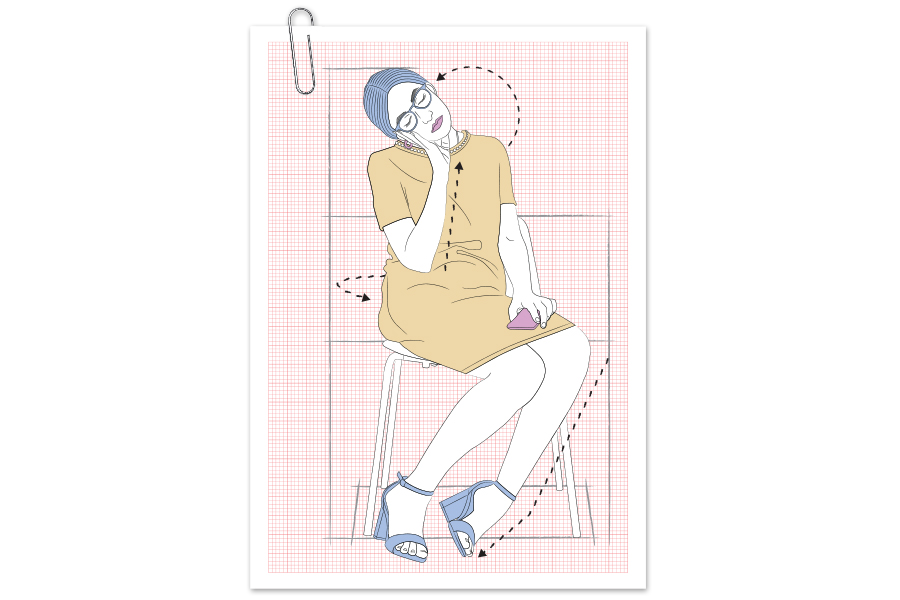 When it comes to theater-style presentations — whether they're held in an exhibit, an event space, or an auditorium — chair arrangements are paramount. Although positioning seats within your footprint might seem as mundane as loading a dishwasher, the location and direction of the chairs have a profound effect on both the presentation's effectiveness and the audience's experience. To provide insights about theater-style seating arrangements, EXHIBITOR spoke with Liz Lathan, CMP, co-founder and chief community officer at The Community Factory. As someone who has built a business around creating and driving engagement for exhibit and corporate event clients, Lathan has a plethora of been-there, arranged-that insight on theater-style seating. Here, she provides a solid case for curves and straight-shooter warnings against straight-line seating configurations.
Why Straight-Line
Seating Must Die
Lathan says there are five Cs to effective attendee engagement: care, collaboration, co-creation, conversation, and connection. Straight-line rows and front-facing chairs — as opposed to curved rows and chairs angled toward the presenter — detract from nearly all of these five Cs. Lathan provides the following key reasons why straight rows and straight-on chairs hinder engagement. When seats are in straight rows and chairs face the front wall as opposed to the presenter, most audience members must crane their necks to view the presentation. Once they tire of this positioning (after roughly 10 minutes) they tune out the presenter. In a curved-row configuration with chairs angled toward the presenter, there's no required head turning or body repositioning, which ultimately aids in and increases audience engagement. In a straight-line setup, attendees can only see the back of people's heads in front of them and the sides of the faces of those next to them. Curved rows and angled chairs allow audience members to view the faces of at least some of the people around them. This perspective allows guests to gauge reactions, witness engagement, and even pose questions to other people (if appropriate). Even if attendees never interact with each other, this face-to-face perspective transforms a one-person show into a community experience. When people face the presenter via curved rows and chair positioning, both ears have an equal opportunity to take in the content. This is particularly important for those with impaired hearing, but it also supports one of Lathan's five Cs: care. Providing seating that allows people to sit comfortably and hear the presentation without straining subtly demonstrates that you care for your audience.  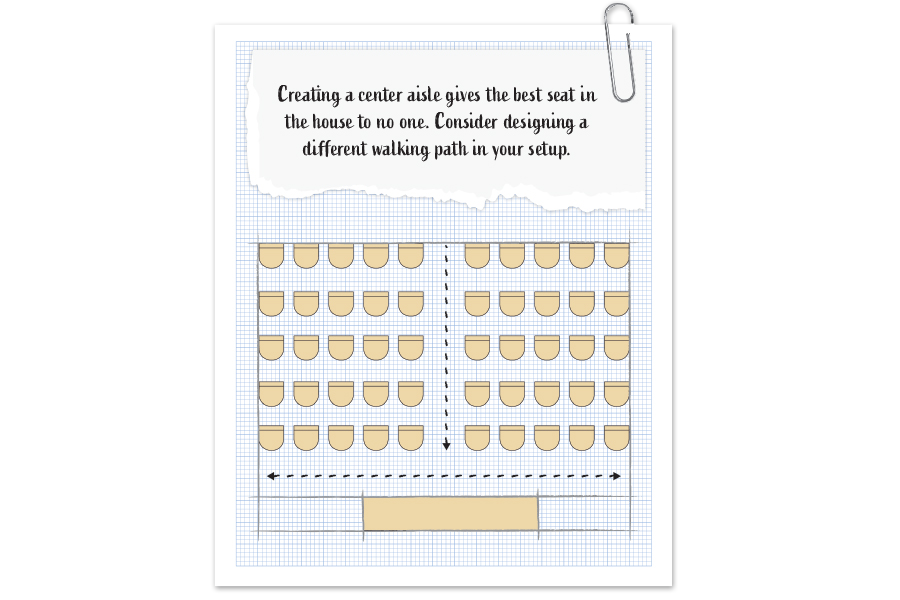
Ways to Work Your Curves
Effective seating arrangements for lecture halls, theater productions, and orchestra halls all employ curved rows and angled chairs for a reason. The strategy works! Instead of relying on standard set-it-and-forget-it straight rows and aisles, consider an outside-the-box arrangement. Lathan offers several design options to help you effectively implement curved rows and angled chairs. Rather than positioning rows in straight lines, which causes the aforementioned neck strain and hinders collaboration, curve the rows into elongated C shapes in front of the stage. To further face-to-face engagement with the presenter and among attendees, angle individual chairs toward the stage. The farther chairs are from the center of the stage, the more each seat should be angled to provide a direct view of the speaker. Many venues automatically set a rectangular room with straight rows of chairs facing the stage set along one of the shorter walls. This configuration prevents you from providing an adequate curve in the rows and significantly limits visibility and hearing for those in the cheap seats. The better option is to set the room so the stage is situated along one of the room's longer walls, which allows you to effortlessly curve the rows and turn the chairs for the best visibility. When it comes to visibility, auditory perception, and audience engagement, the best seats are dead center in the front row. But most theater-style seating runs an aisle smack down the middle — effectively killing the best seats in the house. Instead, divide seating into three or more sections and position aisles left and right of center. Or create an M shape out of the seating. Here, you'd have several interrupted horizontal rows across the front, with two (or more) access aisles cut into the back of the seating. When people face the presenter via curved rows and chair positioning, both ears have an equal opportunity to take in the content. This is particularly important for those with impaired hearing, but it also supports one of Lathan's five Cs: care. Providing seating that allows people to sit comfortably and hear the presentation without straining subtly demonstrates that you care for your audience. 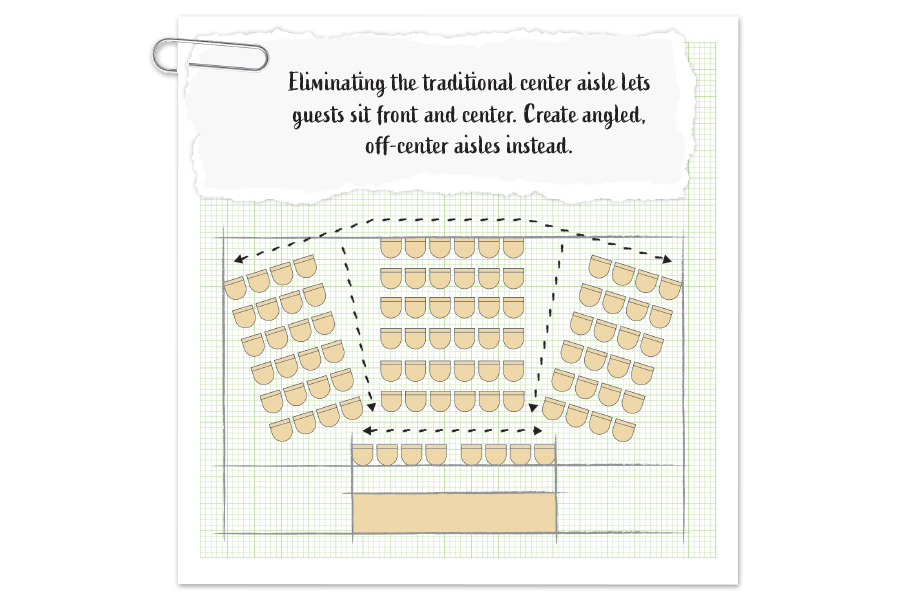 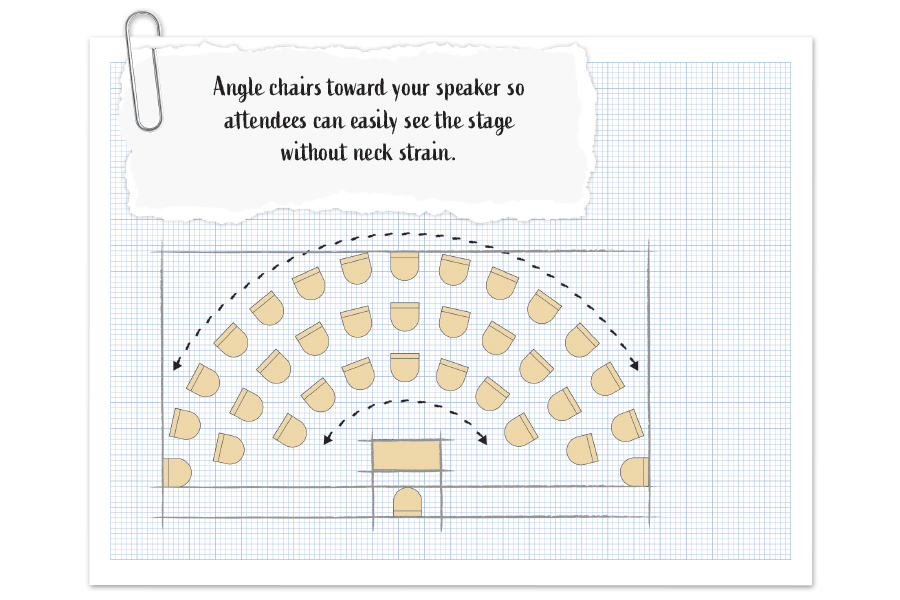
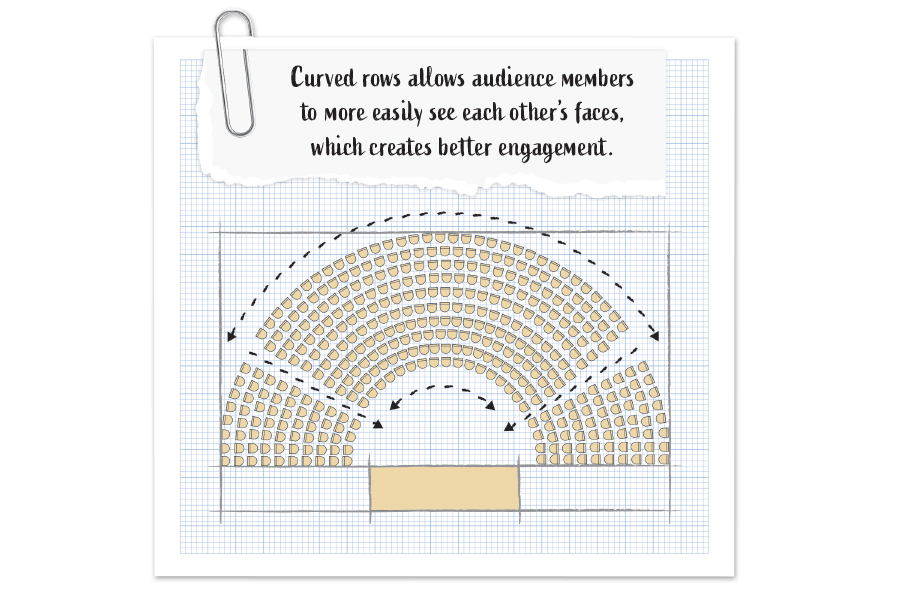

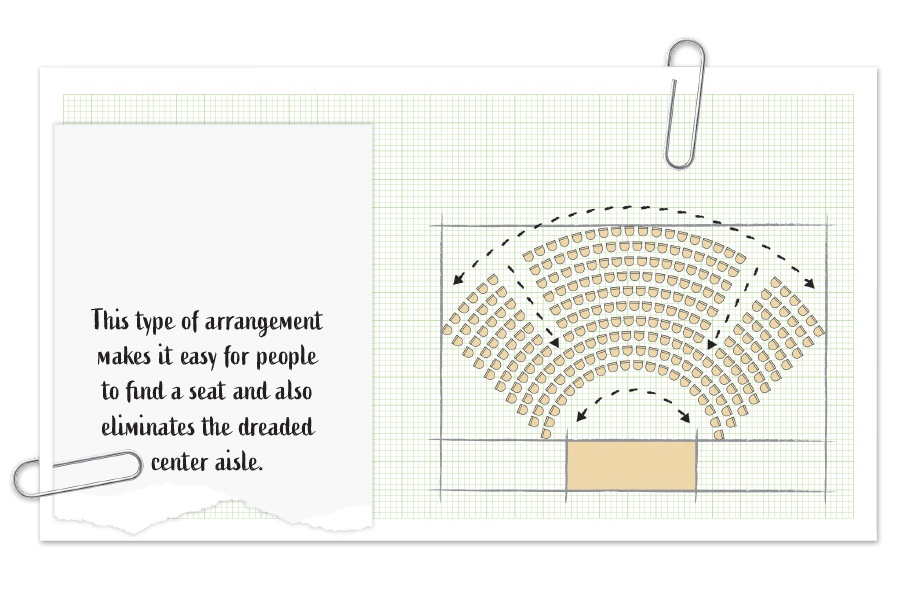
CLOSING COMMENTS
Now that you understand the “whys” and “hows” of curved rows and angled chairs, you can simply relay your requests to each venue or exhibit house that's setting your room, right? Wrong. According to Lathan, it's just not that easy. “I've never had a venue perfectly carry out my request,” she says. “Rather, they typically ignore it altogether.” That's because old-school seating concepts are so deeply ingrained in the industry that most people can't even envision anything different. It's either that or someone writes “theater seating” on a banquet order, and staff members revert to what they know best. Thus, Lathan suggests that you plan a little extra reset time into your schedule and either enlist the venue's crew or some teammates to reposition the seating according to your plan. “It's well worth your time and effort to adjust the seating. Doing so can improve engagement, not only between the audience and the presenter, but also among audience members. Plus, it can signal to attendees that you value them enough to take a couple of simple but additional steps to ensure they're cared for and comfortable during their experience.”
|
|
|
||||||||||||||||||||||||||||
|
|
||||||||||||||||||||||||||||
|
TOPICS Measurement & Budgeting Planning & Execution Marketing & Promotion Events & Venues Personal & Career Exhibits & Experiences International Exhibiting Resources for Rookies Research & Resources |
MAGAZINE Subscribe Today! Renew Subscription Update Address Digital Downloads Newsletters Advertise |
FIND IT Exhibit Producers Products & Services All Companies Get Listed |
EXHIBITORLIVE Sessions Exhibit Hall Exhibit at the Show Registration |
ETRAK Sessions Certification F.A.Q. Registration |
EDUCATION WEEK Overview Sessions Hotel Registration |
CERTIFICATION The Program Steps to Certification Faculty and Staff Enroll in CTSM Submit Quiz Answers My CTSM |
AWARDS Exhibit Design Awards Portable/Modular Awards Corporate Event Awards Centers of Excellence |
NEWS Associations/Press Awards Company News International New Products People Shows & Events Venues & Destinations EXHIBITOR News |
||||||||||||||||||||
|
||||||||||||||||||||||||||||






